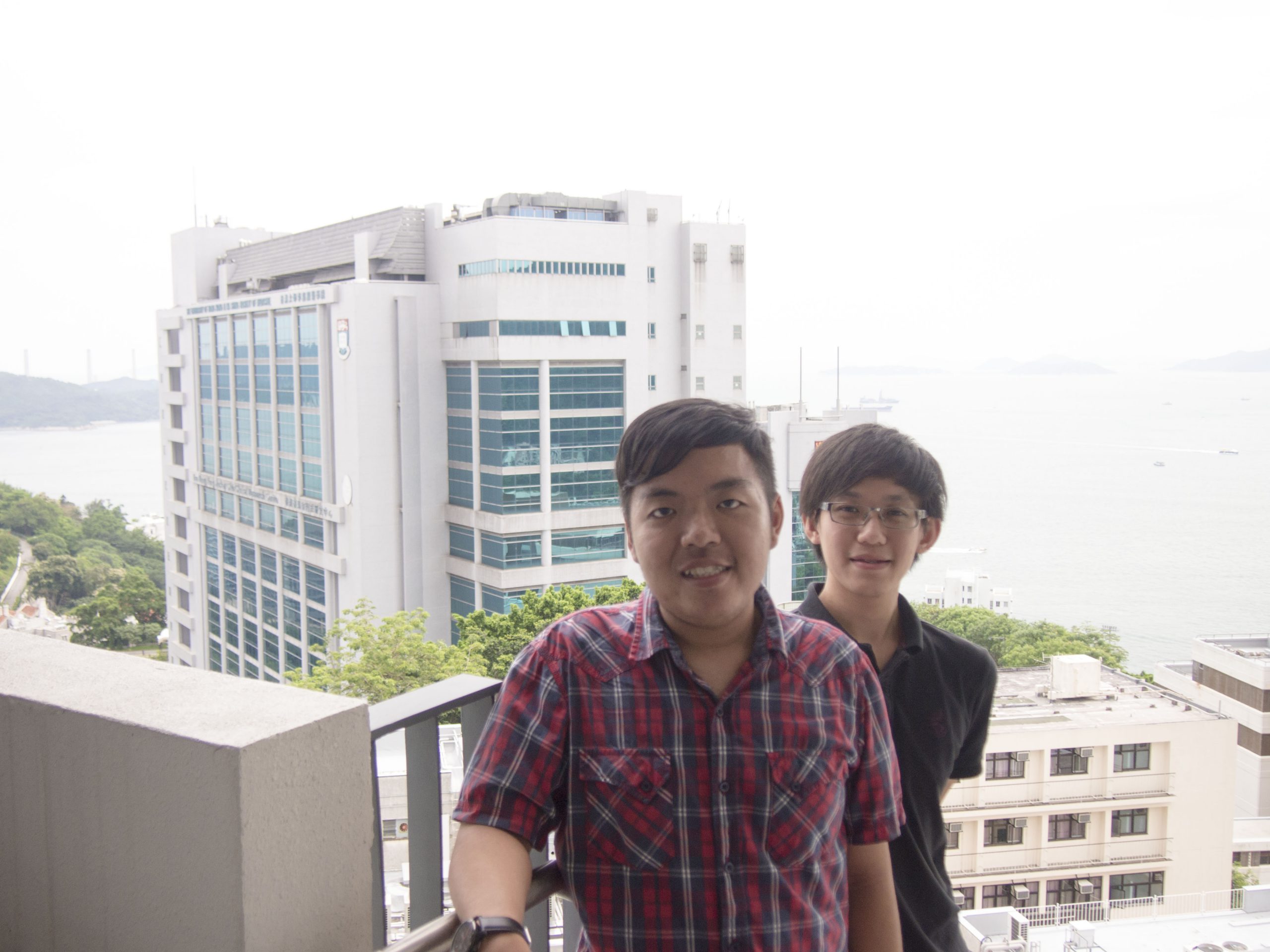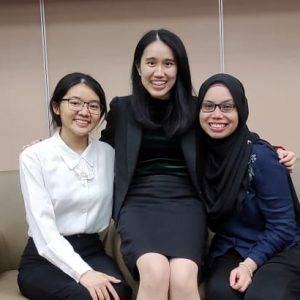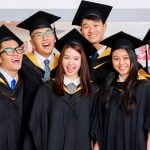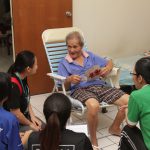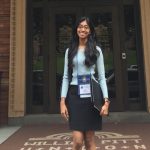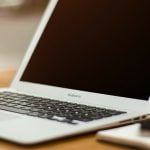23 March until 12 June 2015 – Gui Jian Sheng, an International Medical University (IMU) Medical Biotechnology student had the opportunity to undergo his internship at Department of Physiology of Stem Cell & Regenerative Medicine Consortium (SCRMC), Hong Kong. He relates his experience here.
“My internship supervisor is Prof Ronald Li. My internship activities were divided into 5 sessions: i) Molecular cloning and lentivirus packaging; ii) Stem cell culture and differentiation; iii) Electrophysiology study on embryonic stem cell-derived cardiomyocytes; iv) Study on stem cell immunology and v) Tissue engineering. I was led by different people throughout the 5 sessions.
“Firstly, I would like to say that the whole environment of the lab was neatly arranged and I felt comfortable when doing experiment. The staff there were nice and friendly. Everyone greeted me when I met them in the lab. Based on the activities of 5 sessions, I have learnt a lot of new knowledge. Throughout first session, I learnt about LV packaging and titering, plasmid construction (theory) and genomic DNA extraction. For LV packaging and titering, I thought the technique required was mainly cell culture technique which was learnt from “Cell and Tissue Culture Techniques” module. “Biopharming” module did teach me about the generation of lentiviral vector. The module did mention the production of lentiviral vector required plasmid. The theory of plasmid construction was learnt here. Besides that, genomic DNA extraction was learnt as well. The technique was similar to the technique learnt from “Applied Biotechniques in Biotechnology” module practical 3 about microbial DNA extraction. In addition, I learnt about culturing undifferentiated stem cell and for differentiation, immunostaining and flow cytometry throughout second session. For culturing undifferentiated stem cell and for differentiation, it was slightly different from what I did during practicals at IMU. During IMU practicals, T-flask was used for culturing cell line whereas low attachment 6-well plate was used here for culturing stem cell. As the cells were suspended, I had to transfer all the solution from the wells into a conical tube first and then centrifuged to get the cells. Unlike using T-flask the cells were attached to the bottom and the medium was removed. Skills and techniques for stem cell culture and differentiation were learnt here. For immunostaining and flow cytometry, immunostaining was required before performing flow cytometry. Flow cytometry was not done in practical before and I felt glad to have a chance to perform it. 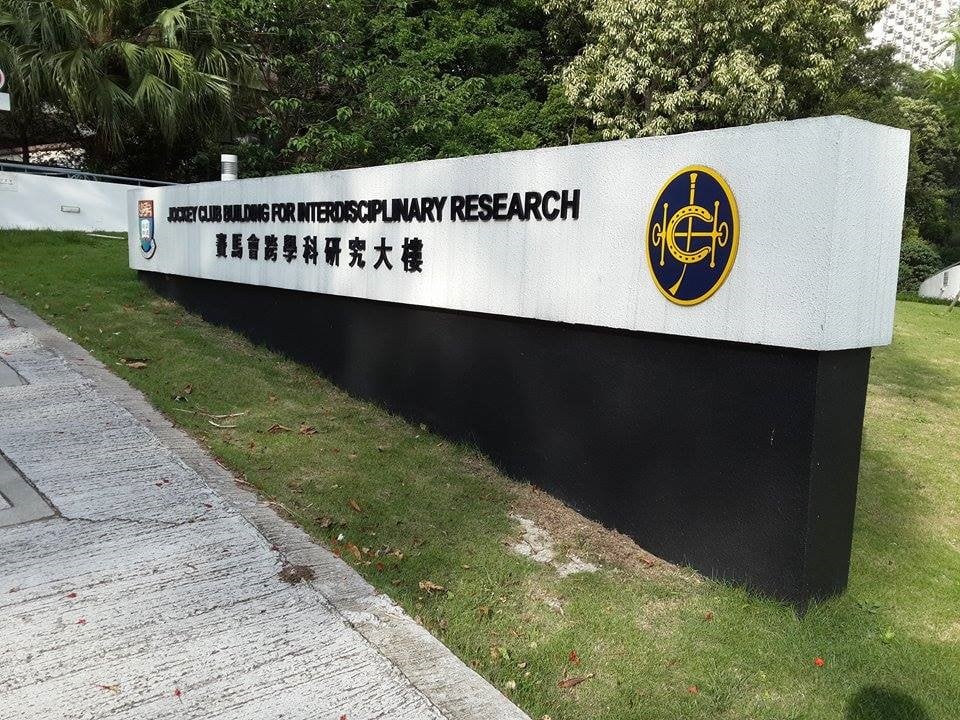 After going through third session, I learnt about whole cell patch clamp and electrical signal recording (action potential). Electrophysiology was new to me and the widely used equipment for studying cell electrophysiology was patch clamp. Whole cell patch clamp was a bit different from other patch clamp (like cell attached patch clamp) as it didn’t disrupt the membrane and recording the action potential of whole cell membranes. The theory of action potential was learnt from the “Human Biology” module and I was able to observe how to record the action potential of cells throughout this session. I learnt about western blot, confocal imaging and human-to-animal transplant under fourth session. For western blot, the whole steps of it were learnt through observation. It was a bit regretful that I didn’t have a chance to have some hands on for western blot, but it was learned well via observation. The person-in-charge explained the theories and steps of western blot clearly to me. For confocal imaging, the main theory of it was immunofluorescence and it was learnt from “Genomics and Molecular Diagnostics” module. It was similar to what I learnt before and it was great to have a look on how to perform the confocal imaging. The software that used to observe the process of autophagy was excellent and I could see how the process was inside the cells clearly. For human-to-animal transplant, animal dissection was required before transplanting the PBMC into the animals (mice). Animal dissection was new knowledge for me as I didn’t handle animal for experiment during IMU practicals. Throughout the last session, I learnt about the making of cardiac tissue strip, monolayer and organoid chamber. All of these were new knowledge for me as I didn’t do this during IMU practicals. I also learnt about the usage and difference between cardiac tissue strip, monolayer and organoid chamber. Different concentrations of unknown drugs were used to test on the cardiac tissue strip for the effect of inducing or suppressing contraction via force measurement. Cardiac monolayer was used for recordings of electrical conduction for calcium transient. Pumping of cardiac organoid chamber could be seen. The knowledge of stem cell application on regenerative medicine was learnt under this session.
After going through third session, I learnt about whole cell patch clamp and electrical signal recording (action potential). Electrophysiology was new to me and the widely used equipment for studying cell electrophysiology was patch clamp. Whole cell patch clamp was a bit different from other patch clamp (like cell attached patch clamp) as it didn’t disrupt the membrane and recording the action potential of whole cell membranes. The theory of action potential was learnt from the “Human Biology” module and I was able to observe how to record the action potential of cells throughout this session. I learnt about western blot, confocal imaging and human-to-animal transplant under fourth session. For western blot, the whole steps of it were learnt through observation. It was a bit regretful that I didn’t have a chance to have some hands on for western blot, but it was learned well via observation. The person-in-charge explained the theories and steps of western blot clearly to me. For confocal imaging, the main theory of it was immunofluorescence and it was learnt from “Genomics and Molecular Diagnostics” module. It was similar to what I learnt before and it was great to have a look on how to perform the confocal imaging. The software that used to observe the process of autophagy was excellent and I could see how the process was inside the cells clearly. For human-to-animal transplant, animal dissection was required before transplanting the PBMC into the animals (mice). Animal dissection was new knowledge for me as I didn’t handle animal for experiment during IMU practicals. Throughout the last session, I learnt about the making of cardiac tissue strip, monolayer and organoid chamber. All of these were new knowledge for me as I didn’t do this during IMU practicals. I also learnt about the usage and difference between cardiac tissue strip, monolayer and organoid chamber. Different concentrations of unknown drugs were used to test on the cardiac tissue strip for the effect of inducing or suppressing contraction via force measurement. Cardiac monolayer was used for recordings of electrical conduction for calcium transient. Pumping of cardiac organoid chamber could be seen. The knowledge of stem cell application on regenerative medicine was learnt under this session.
My internship at SCRMC has enhanced my soft skills and I gained some working experience. I learnt how they distributed workloads to complete the tasks. I learnt that cooperation was important for completing the work.
In a nutshell, I have enhanced my knowledge of stem cell application after completed the internship at SCRMC. I also learnt and acquired several skills, including molecular cloning, stem cell culture and differentiation, patch clamp and others from SCRMC. I have faced problems during internship as well. Some practical techniques were slightly different from IMU and I performed more experiment to familiarise to solve this problem. In addition, I have gained some benefits from SCRMC: i) Enhanced understanding the theories learnt in IMU; ii) Obtained knowledge and skills from SCRMC about stem cell culture, differentiation and application on regenerative medicine and iii) Understood a professional organizational culture.
I have applied my academic knowledge to the activities in SCRMC. I appreciated that IMU gave me the mobility fund to assist my living expenses at Hong Kong. I did learn a lot of things from SCRMC, Hong Kong.”




